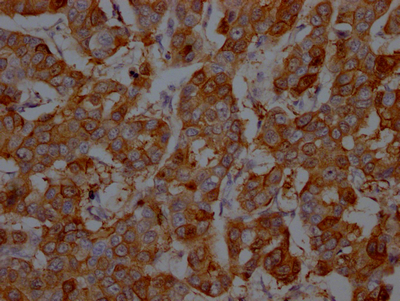The S100A9 recombinant monoclonal antibody is produced using recombinant DNA technology and is suitable for the detection of human S100A9 protein in ELISA and IHC applications. To produce this recombinant antibody, the gene responsible for the translation of the S100A9 recombinant monoclonal antibody is synthesized after sequencing the cDNA of the S100A9 antibody-producing hybridomas. These hybridomas are generated by fusing myeloma cells with B cells isolated from animals that have been immunized with a synthesized peptide derived from human S100A9. Once the gene is synthesized, it is cloned into a vector and transfected into cells for cultivation. After cultivation, the S100A9 recombinant monoclonal antibody is purified through affinity chromatography from the cell culture supernatant.
S100A9 is primarily produced by myeloid cells, such as neutrophils, monocytes, and macrophages, in response to inflammation or infection. S100A9 can interact with several target proteins, including TLRs and the receptor for advanced glycation end products (RAGE), which activate downstream signaling pathways, such as the NF-κB pathway, causing the production of pro-inflammatory cytokines and chemokines. It can form a heterodimer with S100A8 to form the complex calprotectin, which binds to bacterial and fungal pathogens, preventing their growth and promoting their clearance by immune cells. S100A9 has also been implicated in various diseases, including cancer, inflammatory bowel disease, and arthritis.






